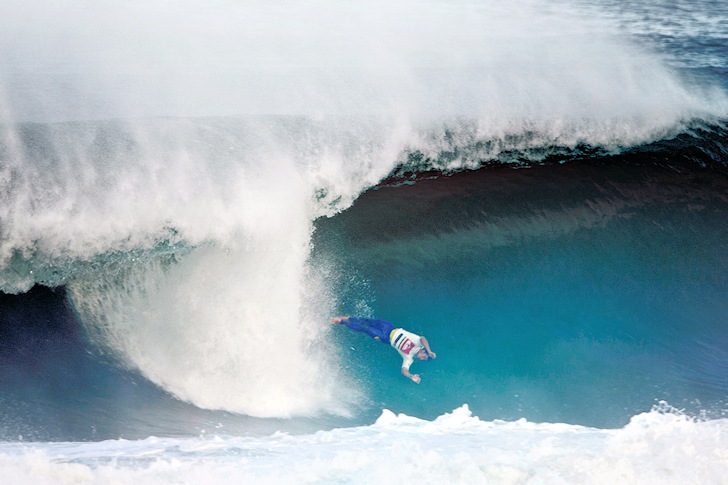Big wave wipeouts are no joke and can be very destructive, causing physical - and psychological - injury or death.
Even the best guys get axed. Surviving a monster wipeout is really about three things:
- Water competence;
- Awareness;
- Quick-thinking adaptability;
Water Competence
Water competence is a key to survival.
It's no secret that the surfers who stand the best chance of getting through a huge wipeout are the ones who are strong in all types of water situations.
Spend time out there, surfing as often as you can. Strong swimming and improved diving skills also help develop better lung capacity and confidence under the waves.
Leave your board in the sand and get acquainted with extreme wave conditions if needed.
Awareness
Awareness is knowledge, so collect data from the environment.
Know more about seafloor characteristics (sharp reef, sand, or rocks?), wave tendencies (especially for waves that suck dry, like this one), and any potential hazards in the impact zone (piers; submerged debris).
Learn where everything is - your board, other surfers, support boats, jet skis, etc.
Train Your Quick-Thinking Adaptability
From the moment you lose your line or the wave overtakes you, things change fast. Never panic, but do be quick.
If you can, launch toward the back of the wave. Go ass-first. Take a deep breath. Ball up loosely when you break the surface.
Immediately tuck your chin if possible and protect your head. Try to create as much space between you and the surfboard as you can.
Push it away with your feet. If the seafloor allows it, swim low to where the water is calmer.
When the tumbling has eased off, remember your board floats.
If you're still leashed, pull yourself to the surface. Then, get paddling again to get out of the impact zone.
Learn how to fight the most common surf fears.
